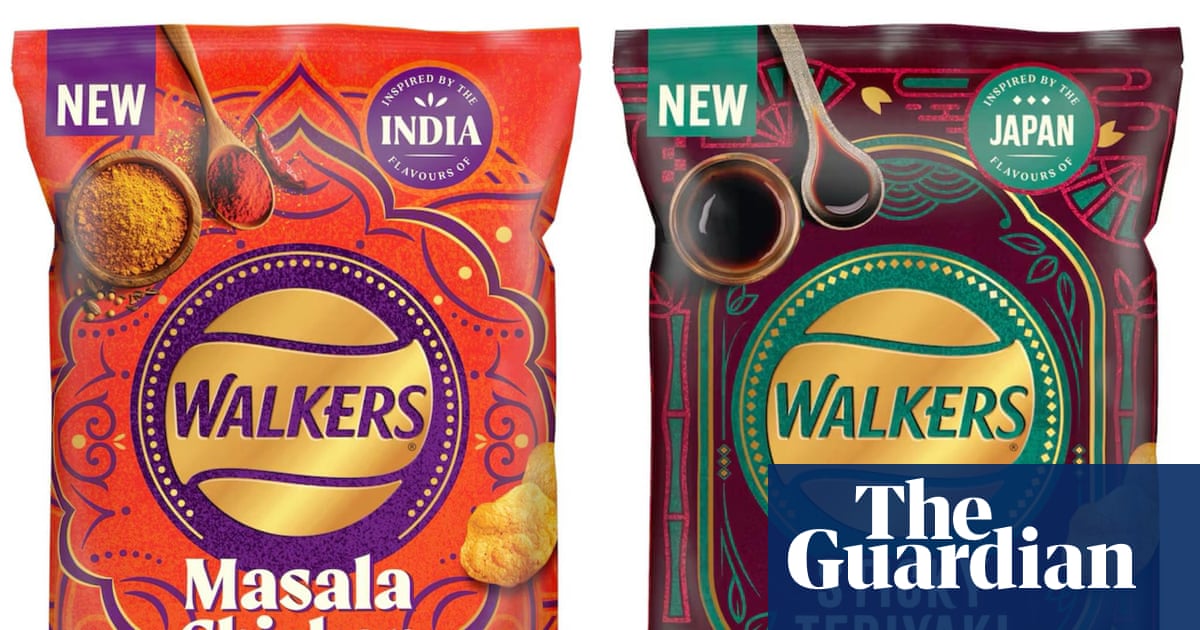Nostalgia for the 1990s might have reached its peak with Oasis back on tour this summer, but several of Britain’s best-known brands are also trying to make a comeback, reinventing themselves with new flavours, packaging or names.
Walkers, Nik Naks and Bacardi Breezer are among some of the brands that are adapting to try to stand out in the food and drink market.
This week, the crisps brand Walkers launched its first new permanent flavours in two decades – Masala Chicken and Sticky Teriyaki. It follows Nik Naks, a snack staple for many 90s children, which recently added Tangy ’N’ Cheesy to its lineup, its first new flavour in 40 years. Cadbury is also refreshing its Bournville range with a salted caramel twist, while Bacardi Breezer, once synonymous with the alcopop era, has undergone a rebranding and will relaunch this summer.
Analysts say such moves reflect the pressure to stay relevant to younger consumers while also appealing to millennials, who grew up with these products.
The PR and branding expert Lucy Sambrock said: “Millennials are the real target [audience] here. As 90s kids we’ve now got disposable income and young families of our own, so the emotional pull of nostalgic brands is powerful. Gen Z are a secondary audience: even if they didn’t live through the originals, they’re drawn to retro branding, playful limited editions and those Instagrammable moments.”
Seyi Oduwole, lead food and drink analyst at the Future Laboratory, said: “Legacy products are being remixed for a generation that craves novelty and shareability.” She added: “We’re seeing a rise in ‘swicy’ (sweet and spicy) flavours and globally inspired twists. Reinvention is the secret ingredient to keeping classics relevant.”
The trend reflects what the Future Laboratory calls a “flavour frenzy”, with food companies mixing the familiar with the unexpected. Rather than abandoning core products, they say, companies are increasingly positioning twists on existing formats as premium “little treats”, offering consumers something playful and escapist.
For gen Z, experimentation is part of the appeal. TikTok trends featuring unusual food mashups, from pickle-tasting challenges to over-the-top martinis, have created an appetite for bold, unconventional combinations. “Younger consumers are far more open to experimental flavours,” said Ella Palmer, culture and insights manager at the branding agency Love. “But it’s not just about taste. Gen Z want to buy into a brand’s whole world: its story, its values, its community … gen Z want authenticity.”
Reinvention carries risks. Sambrock said that when Heinz attempted to rename Salad Cream as “Sandwich Cream” in 2018, the backlash was swift, and the brand quickly reverted. Coca-Cola’s 1980s reformulation was pulled within three months. Marmite’s chocolate – launched in 2012, with notes of Marmite, onion and garlic flavours – also proved divisive, she added.
Oduwole says: “Overly strange or disconnected flavour experiments will not perform if they don’t have context or emotional resonance. Consumers want a story, familiarity, comedy or sensory payoff; random weirdness for its own sake rarely sticks.”
Sambrock said: “Consumers are protective of heritage brands … Reinvention works when it taps into genuine memories and gives people a reason to try again. It fails when the core product is changed or feels gimmicky.”
Ross McPhie, senior lecturer in digital innovation at Teesside University, said that brand reinvention tends to “run in 20-year cycles. The 90s and 2000s are currently seeing a revival, in the 90s it was the 70s, in the 2000s it was the 80s.”
He said: “Music and fashion, in particular, see these times as rich for inspiration. Arguably, the biggest reinvention has come in the form of Oasis reuniting to tour this summer. People were willing to pay exorbitant amounts of money to see them live thanks to this nostalgia.”
The current revival of 1990s culture, seen in fashion, music and social media aesthetics, is helping create fertile ground for these revivals. But experts stress that nostalgia alone is not enough. “Millennials have a strong emotional pull to the brands they grew up with, while gen Z are discovering them through retro appeal,” said Oduwole. “But what keeps people coming back is the sense that these products are still fresh, playful and relevant.”
